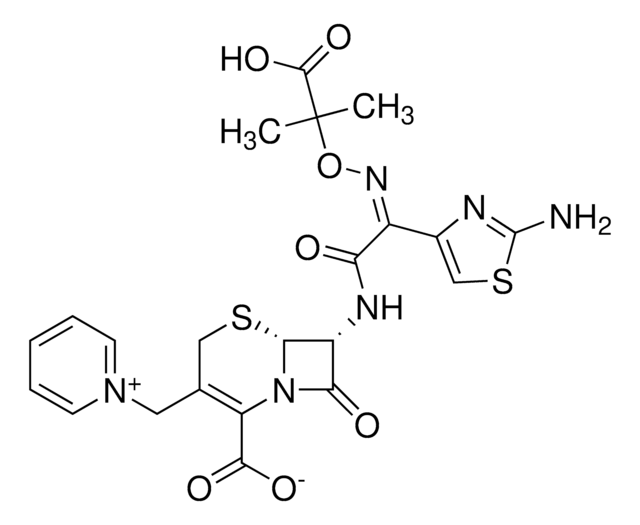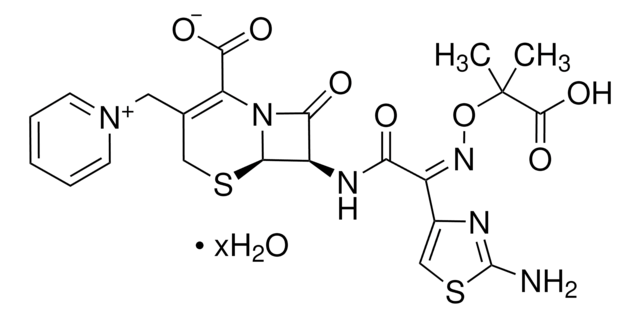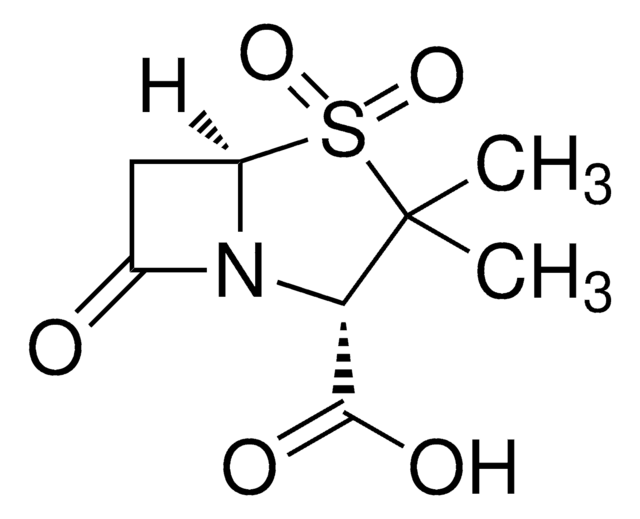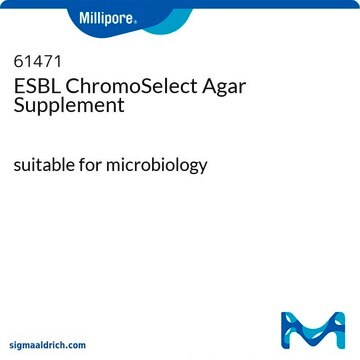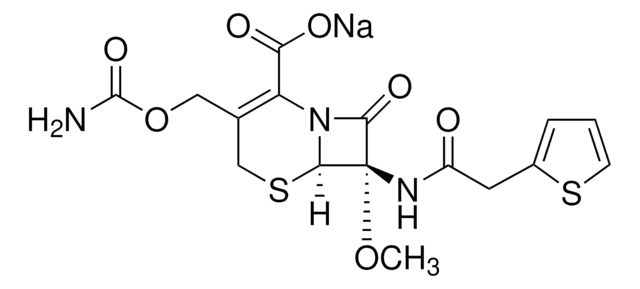A6848
Aztreonam
analytical standard
Synonym(s):
[2S-[2α,3β(Z)]]-2-[[[1-(2-Amino-4-thiazolyl)-2-[(2-methyl-4-oxo-1-sulfo-3-azetidinyl)amino]-2-oxoethylidene]amino]oxy]-2-methylpropanoic acid
About This Item
Recommended Products
grade
analytical standard
Quality Level
form
powder or crystals
technique(s)
HPLC: suitable
gas chromatography (GC): suitable
application(s)
forensics and toxicology
pharmaceutical (small molecule)
veterinary
SMILES string
C[C@H]1[C@H](NC(=O)\C(=N/OC(C)(C)C(O)=O)c2csc(N)n2)C(=O)N1S(O)(=O)=O
InChI
1S/C13H17N5O8S2/c1-5-7(10(20)18(5)28(23,24)25)16-9(19)8(6-4-27-12(14)15-6)17-26-13(2,3)11(21)22/h4-5,7H,1-3H3,(H2,14,15)(H,16,19)(H,21,22)(H,23,24,25)/b17-8-/t5-,7-/m0/s1
InChI key
WZPBZJONDBGPKJ-VEHQQRBSSA-N
Looking for similar products? Visit Product Comparison Guide
Related Categories
General description
Application
- Determination of aztreonam in two simulated lung fluid solutions― artificial lysosomal fluid and gamble solution by a UV spectroscopic method
- Multi-residue analysis of eight β-lactams by ultra-high performance liquid chromatography (UHPLC) combined with a photo-diode array (PDA) detector in human plasma & serum samples
- Simultaneous quantitative analysis of nine β-lactams by UHPLC along with tandem mass spectrometry (MS/MS) in human plasma samples
Other Notes
Storage Class Code
11 - Combustible Solids
WGK
WGK 2
Flash Point(F)
Not applicable
Flash Point(C)
Not applicable
Personal Protective Equipment
Choose from one of the most recent versions:
Certificates of Analysis (COA)
Don't see the Right Version?
If you require a particular version, you can look up a specific certificate by the Lot or Batch number.
Already Own This Product?
Find documentation for the products that you have recently purchased in the Document Library.
Customers Also Viewed
Our team of scientists has experience in all areas of research including Life Science, Material Science, Chemical Synthesis, Chromatography, Analytical and many others.
Contact Technical Service


